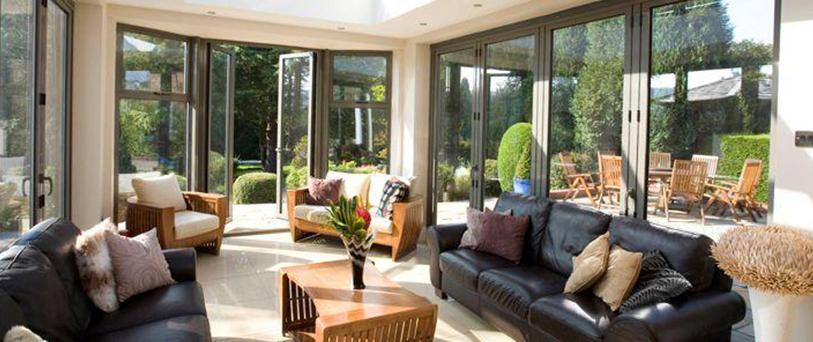Answer these simple questions and we will find you the BEST prices
Which type of solar quotes do you need?
It only takes 30 seconds
100% free with no obligation

Select the energy-efficient solution that fits your needs best

Independent and unbiased, we’ve helped over 12.000 UK homes go green in the last year!

Our service is 100% free and with no obligation
- GreenMatch
- Orangeries
Orangeries - A stylish alternative to conservatories

Orangeries are the ultimate in luxury for any homeowner wanting to bring the outside in. So if you are looking for something that really has the wow factor, opt for an orangery rather than a traditional conservatory.
Forerunners to conservatories, stone and timber built orangeries first rose to prominence in the UK back in the 17th century. Popular with wealthy homeowners, orangeries – glazed buildings which incorporate solid high ceilings – were designed for cultivating and protecting exotic fruits and plants.
Orangeries were regarded as the ultimate representation of a person’s wealth and favoured by wealthy property owners, particularly merchants and noblemen. These days however, they are no longer just a status of the wealthy, and over the last five years orangeries have grown in popularity. That trend looks set to continue, as more and more homeowners seek something more stylish and substantial than a traditional conservatory.
Orangeries, a stylish alternative
Compared to traditional conservatories, orangeries are considerably grandeur. Essentially a cross between a conservatory and a home extension, orangeries are notable for their large windows and solid brick pillars, they are a stylish alternative if you are seeking to build a modern glazed multi purpose extension.
A room which can be used all year round and not just in the summer, modern orangeries benefit from advances in technology – which enables them to be utilised 365 days of the year – including under floor heating to tinted and coated glazing to help with heat retention.
What’s the difference between an orangery and a conservatory
Although often utilised for the same if not similar purposes, to look at orangeries are distinctly different. While a traditional conservatory features entirely glass walls, an orangery’s most distinct feature is that it incorporates side elevations partly constructed from stone, brick or hardwood. Orangeries have picture windows and lantern roofs to optimise the light, and it’s this feature that sets them apart from their conservatory counterparts.
In the UK, famous orangeries include the Kensington Palace Orangery and The Orangery at the Royal Botanic Gardens, Kew. Other popular orangeries are littered throughout the country, many of which are today utilised as restaurants and tea rooms.
Get quotes for your new orangery now
Materials
Orangeries – a multi purpose living space
The very definition of multi purpose, an orangery can be utilised in a variety of ways. Although some people do continue to use them for their traditional purposes – namely horticulture such as growing plants and fruit – modern orangeries tend to be used in other ways:
Thanks to their increasing popularity, there are a large number of conservatory companies who specialise in the design, manufacture and installation of bespoke orangeries including David Salisbury Conservatories, Brace Joinery and Breckenridge. Cost will depend on the design and the materials involved.
How does an orangery add value to your home?
A well-designed and professionally built conservatory or orangery, with stunning external views and great direct sunlight, will, of course, add value to your overall house price valuation.
That said, it is all about quality and sunlight. These two areas are the greatest indicators of a possible increase in property value. However, to get property price increases due to an orangery, of around 5 to 10 per cent, one needs to create and build a large space that captures the design aesthete of the Baroque yet simultaneously providing a space with purpose and meaning.
It goes without saying, but an orangery will cost more money in terms of construction and design costs than a traditional conservatory.
The orangery, due to its foundational design, lantern roof and brick walls will have a sturdier feel in terms of connecting this new space with your home – the orangery will even mimic the house in terms of design continuity.
In terms of costs, according to Zoopla, a well-designed and professionally built orangery will cost around £20,000 at the minimum end of the scale. The 5-10 per cent property price increase brought about by the installation of an orangery can be seen if we take the Office of National Statistics UK average house price of £254,000, which would boost the property price to an approximate £279,400 which makes a theoretical £5,000+ profit based on average £20,000 orangery construction costs.
Whatever your requirements, GreenMatch can provide you with up to 3 quotes from local recommended conservatory installers who will be able to meet all your conservatory needs.
- Quotes from local engineers
- Payment by finance available
- 100% free and no obligation
It only takes 30 seconds



We strive to connect our customers with the right product and supplier. Would you like to be part of GreenMatch?

